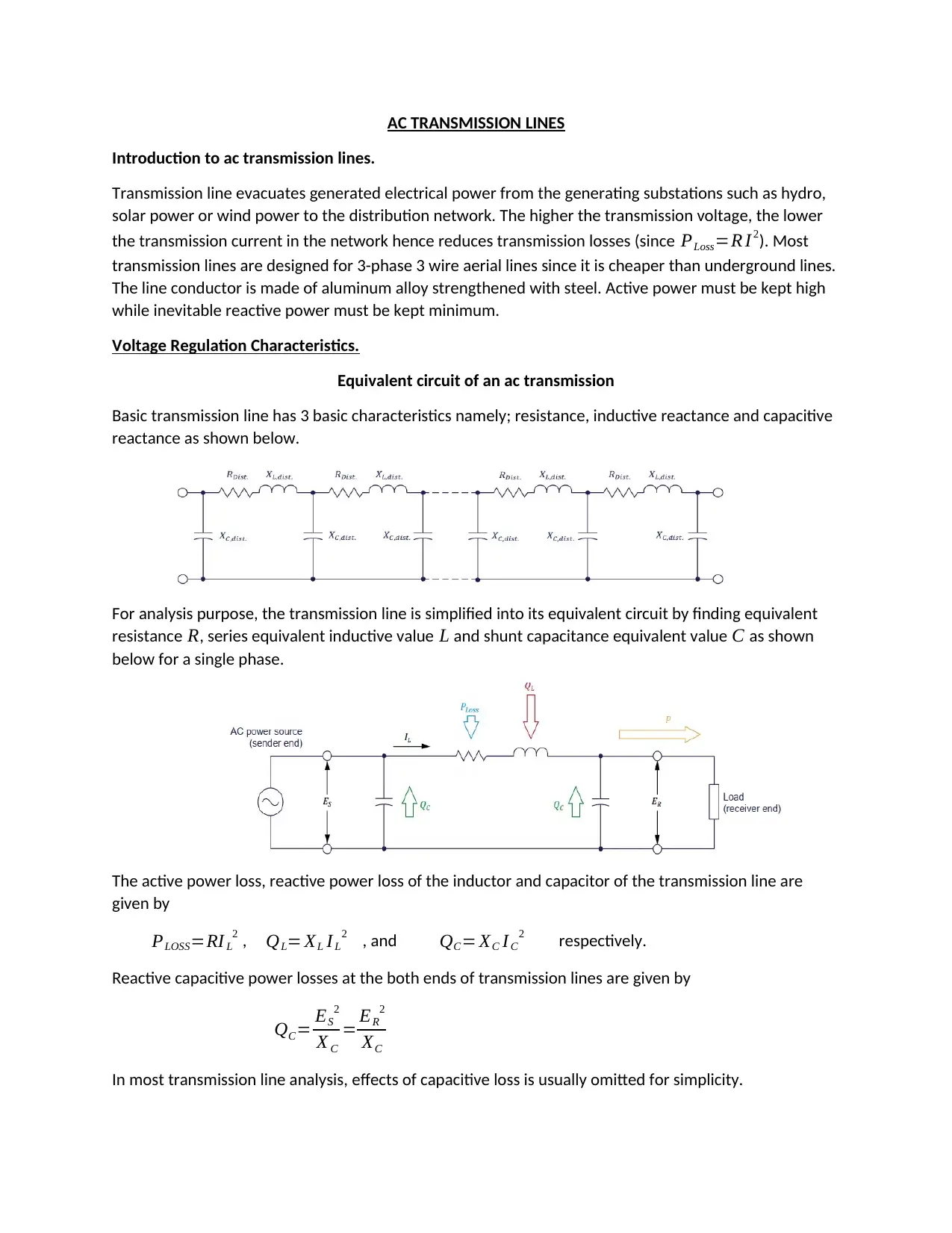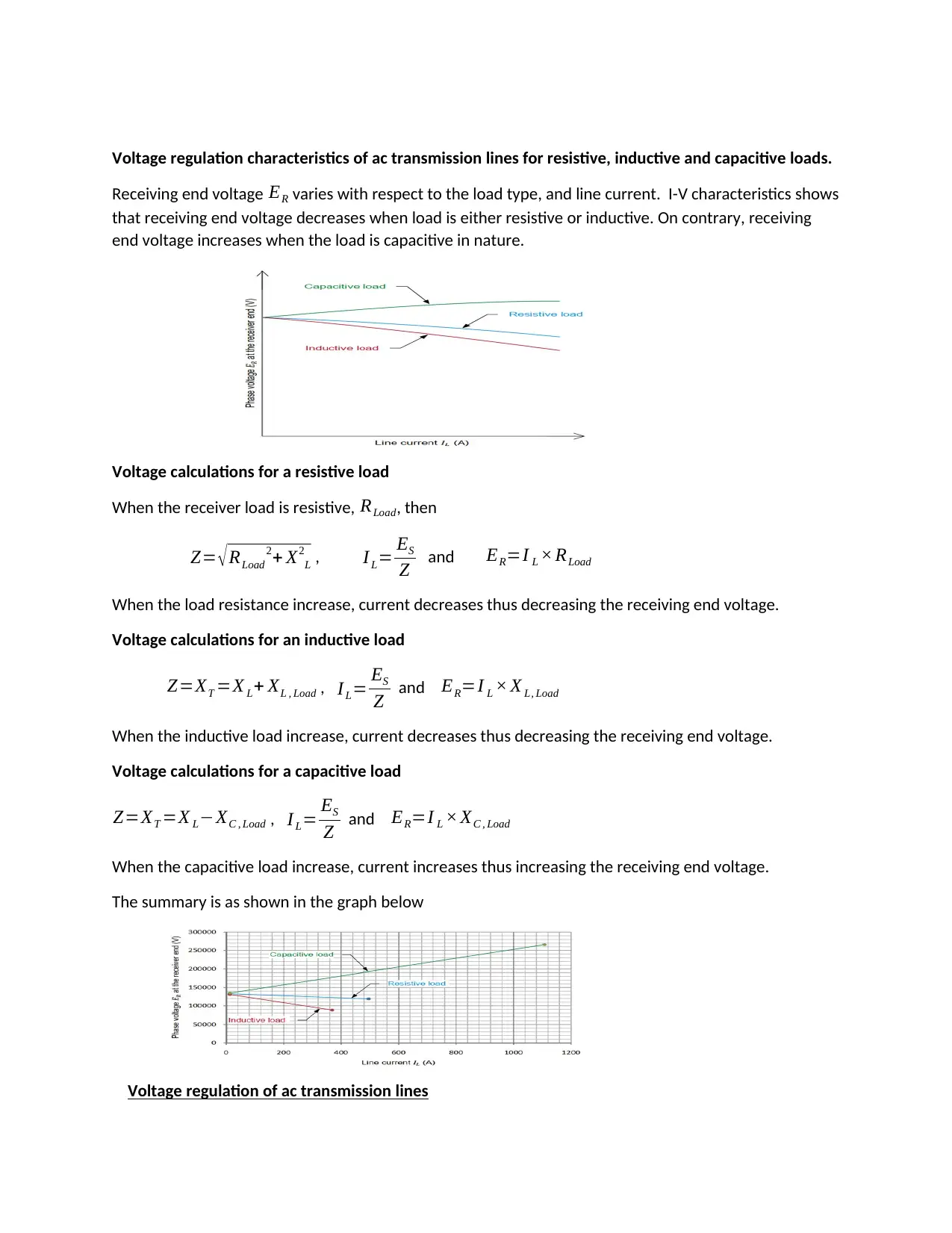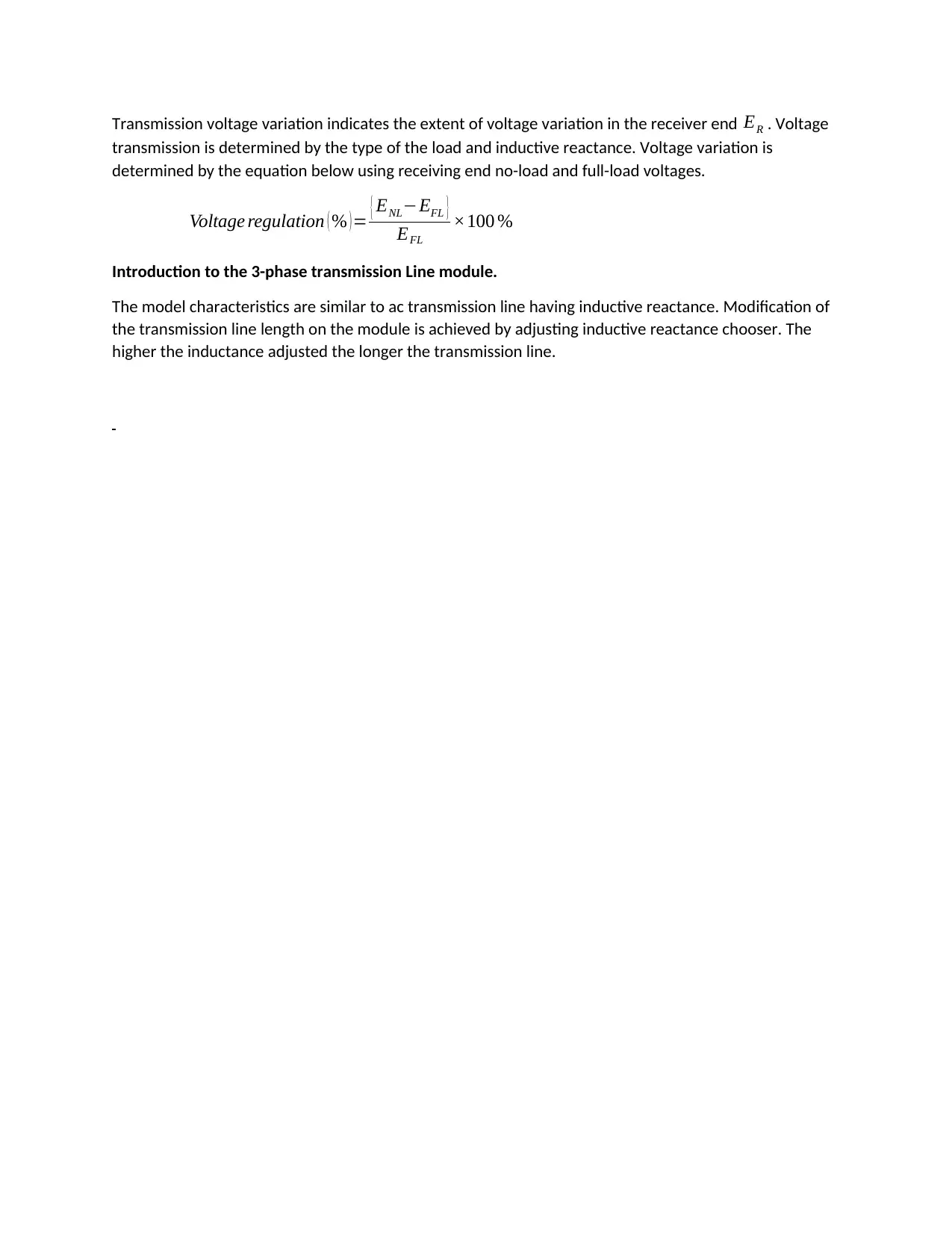AC Transmission Lines: Voltage Regulation and Power Flow
VerifiedAdded on 2022/11/18
|3
|468
|1
Practical Assignment
AI Summary
This assignment provides a comprehensive overview of AC transmission lines, detailing their fundamental characteristics and operational principles. It explores the essential aspects of voltage regulation, examining the behavior of transmission lines under resistive, inductive, and capacitive loads. The analysis includes voltage calculations and graphical representations to illustrate voltage variations. Furthermore, the assignment introduces the concept of 3-phase transmission lines, highlighting the impact of inductive reactance. The latter part of the assignment provides an introduction to FACTS devices such as SVC and STATCOM and also covers HVDC systems. The assignment also explains the importance of transmission lines in power systems, focusing on active and reactive power flow. The assignment also covers methods to control active and reactive power flow in interconnected power networks, and the use of regulating autotransformers. The manual includes exercises to help students understand the concepts of power transmission, including the compensation of voltage drops using shunt capacitors and the control of active and reactive power flow in interconnected power networks.
1 out of 3










![[object Object]](/_next/static/media/star-bottom.7253800d.svg)